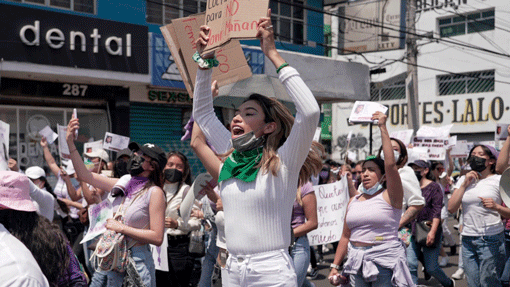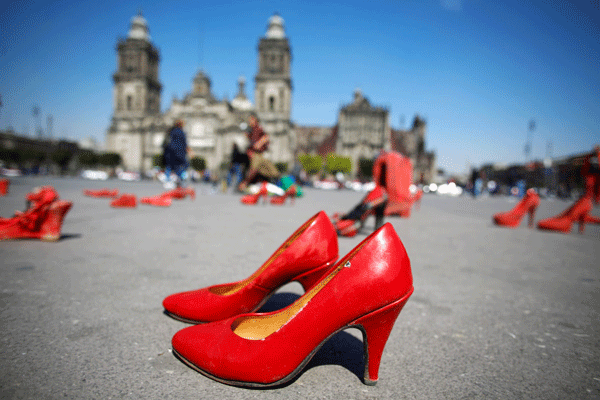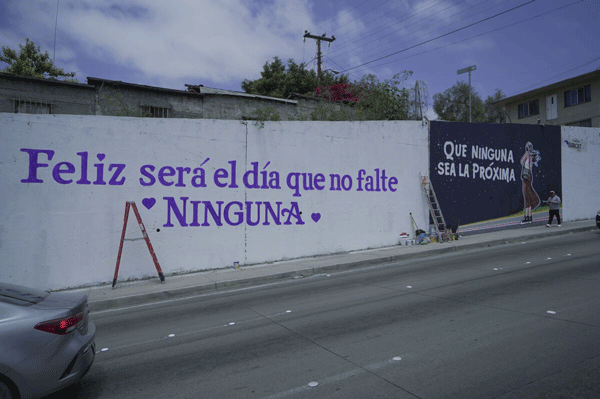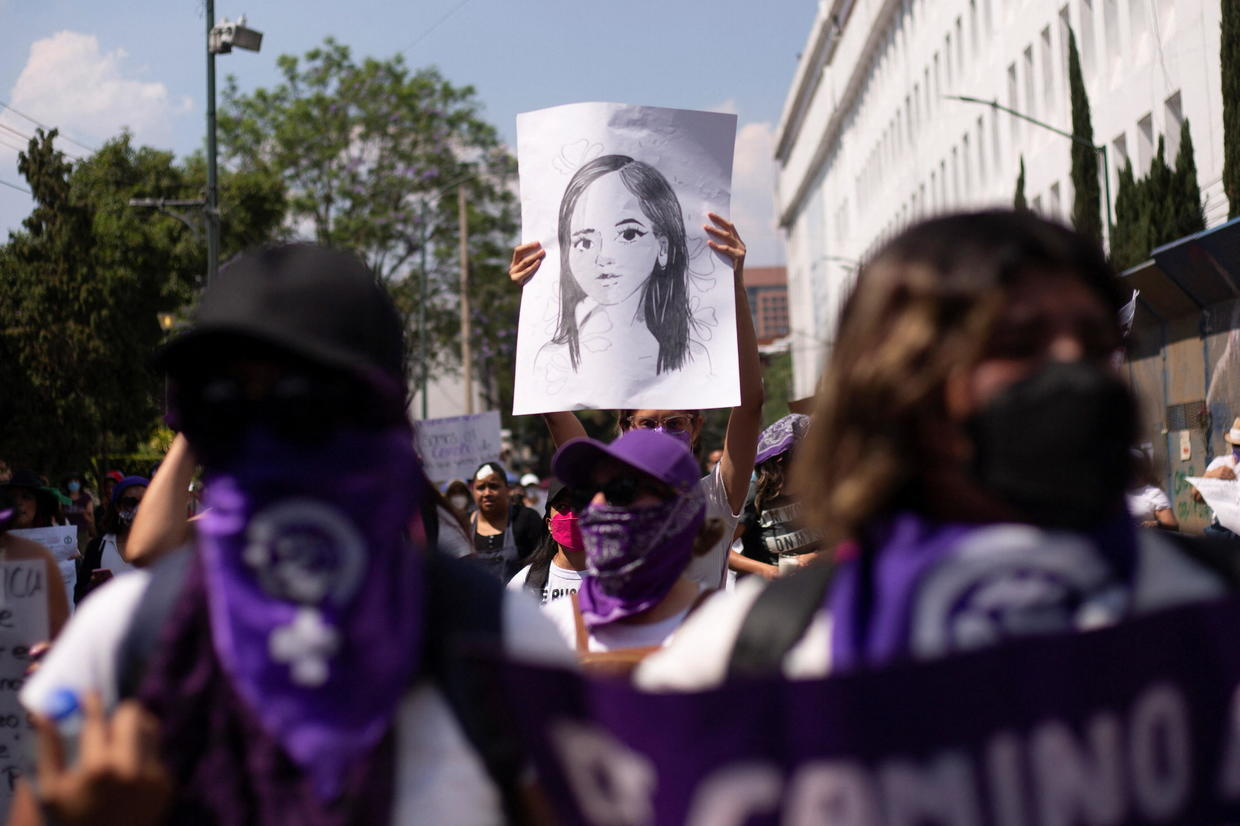The United Nations defines femicide as a deliberate killing of a woman that is motivated by gender-related factors. During 2021, femicides accounted for over a quarter of the 3750 homicides recorded in Mexico. These figures have shown a consistent upward trend over the years. In 2015, there were 427 cases of femicides compared to a staggering 1004 cases in 2021.
Many regional artists, as well as protesters themselves, have been motivated to use various forms of artwork to highlight femicide and gender-based violence bringing attention to the United Nations Sustainable Development Goals such as Gender Equality, Reduced Inequalities as well as Peace, Justice and Strong Institutions.

Elina Chauvet, a Mexican political artist, has been creating art since the 1990’s on several topics regarding immigration, corruption and missing and murdered women. One of Chauvet’s best known pieces Los Zapatos Rojos/ The Red shoes, is a travelling installation that highlights gender based violence by representing women who have faced or lost their lives due to gender race violence and femicide through the medium of displaying red shoes in the streets.

The installation started in 2009 with 33 pairs of shoes, out of Ciudad Juarez, Mexico, Chauvet’s hometown. Through the interview, Chauvet noted “a common thread” of women going missing particularly in relation to shoes. Lots of these women worked in shoe shops. In 2021, the installation exceeded over 300 pairs of shoes, often donated or painted by families who have lost a loved one to femicide with sometimes the shoes belonging to the victim themselves.
Last year, 18-year-old Debahni Escobar fell victim to femicide in Mexico, drawing significant attention to her case. Before her tragic demise, Escobar took a haunting photo of herself on a deserted road, which added to the public's interest in her story. Additionally, Escobar was a law student and a vocal proponent of women's rights, which made her death all the more poignant, as she fought for the same cause that ultimately claimed her life.

Local artists like Rafael Aguirre and Oswaldo Carmona, from Tijuana, Mexico, were also motivated to create a huge mural honouring Escobar’s life, in their hometown and bring light to this issue Their mural depicts one of the final pictures that was taken of Escobar with a quote, “Que ninguna sea la próxima” (Let no one be the next). Beside it, in the purple text it says “Feliz será el día que no falte ninguna” (Happy would be the day that none are missing). The colour purple that is used in this mural is the colour that is often seen throughout femicide protests to represent gender equality according to the Toronto Star. Through this art piece Aguirre and Carmona said they wanted to bring attention and light to other women that are still missing in Mexico, the artists expressed in an interview with the San-Diego Union-Tribune.
Following the recent death of Escobar, has added to an enormous amount of protests in Mexico that have been ongoing to bring attention to this uprising issue of femicide. The recent protests have been “largely peaceful,” according to CTV News compared to previous protests. Protesters used missing posters to describe the different women that disappeared or were murdered while other protestors advocated by creating drawings or collages.

According to a 2021 investigation done by Amnesty International in this issue of femicide in Mexico, there is often corruption and the lack of authorities not using all their resources in order to carry out investigations in order to solve cases.
However this is just the tip of the iceberg, officials working on such cases often claim they have too much workload and lack facilities to store and secure evidence taken from crime scenes - which can further compromise the evidence according to the Amnesty investigation.
These root problems underlying cases like Escobar's often lead to delayed justice or unsolved cases.Although cases like Escobar’s have received more attention due to the advocacy on social media, there are many that often go unnoticed or unreported. Mexico witnessed 3,723 cases of female homicides in 2020, with 940 investigated as femicides across the country's 32 states. Shockingly, not a single state was devoid of such crimes.
While local artists like Elina Chauvet, Rafael Aguirre and Oswaldo Carmona are highlighting femicide in Mexico through their artwork, it is important to understand that these issues are so deep rooted. Through these protests and movements there is a silver lining, a spotlight to demand for equality and to reduce the inequalities faced by those that face gender-based violence
